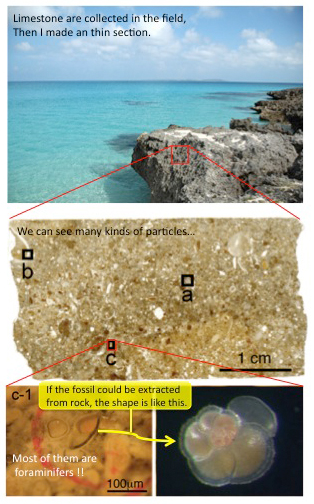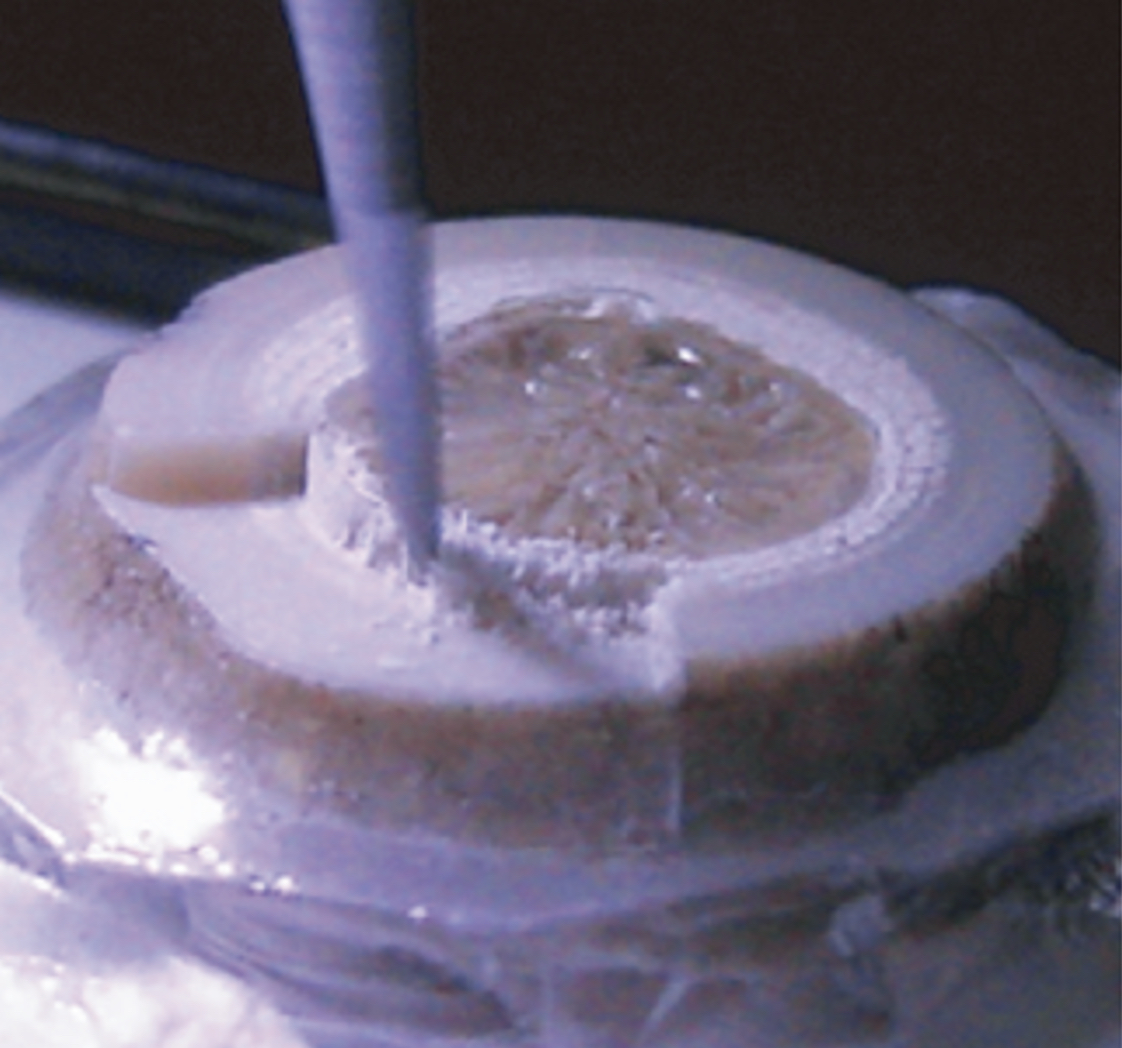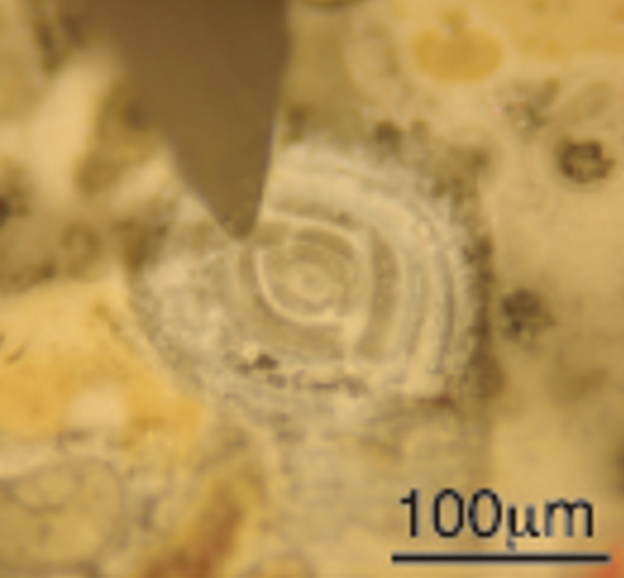Chapter 1: Fossils in Limestone

Dr. Sakai, Research Scientist at JAMSTECs Institute for Biogeoscience, and inventer of the GEOMILL326, first came up with the idea for the GEOMILL326 ten years ago.
There are many microfossils such as foraminifera contained within limestone that have been created from coral reefs. One of the themes of my research is analyzing such samples in order to determine things such as the temperature of the water at the time that they were formed. However , limestone is very hard, and the extraction of microfossil samples of over 50μm is extremely difficult. Previously, the only method was to use a microscope and lathe (microtome), manually cutting slices for analysis. I decided, Well, if theres no existing technology to do this, Ill just have to make it myself. That was in 2001, when Dr. Sakai had just started working at JAMSTEC. He then began to promote research at the Research center for Coastal Lagoon Environments at Shimane University.
It was there that he first met Dr. David Dettman, a visiting professor from the University of Arizona. With advice from Dr. Dettman, Dr. Sakai came up with the idea of combining the drill, microscope and camera. However, working out how these could be made to operate together was not easy and so initially he began by focusing on the software that would drive the machine.
Dr. Sakai started looking for a software development company. Wanting to be able to deal with them face-to-face, he focused on specialists in Shimane Prefecture. But having no existing contacts, it was a case of having to search online and phoning around. Finally, he came across Izumo Web - a website development company, which, whilst having no experience of developing analysis software, was happy to take on the challenge. It turned out to be a very good choice, and after a year of trial-and-error, the first GEOMILL326 prototype was complete.

Dr. Sakai, Research Scientist at JAMSTECs Institute for Biogeoscience, and inventer of the GEOMILL326, first came up with the idea for the GEOMILL326 ten years ago.
There are many microfossils such as foraminifera contained within limestone that have been created from coral reefs. One of the themes of my research is analyzing such samples in order to determine things such as the temperature of the water at the time that they were formed. However , limestone is very hard, and the extraction of microfossil samples of over 50μm is extremely difficult. Previously, the only method was to use a microscope and lathe (microtome), manually cutting slices for analysis. I decided, Well, if theres no existing technology to do this, Ill just have to make it myself. That was in 2001, when Dr. Sakai had just started working at JAMSTEC. He then began to promote research at the Research center for Coastal Lagoon Environments at Shimane University.
It was there that he first met Dr. David Dettman, a visiting professor from the University of Arizona. With advice from Dr. Dettman, Dr. Sakai came up with the idea of combining the drill, microscope and camera. However, working out how these could be made to operate together was not easy and so initially he began by focusing on the software that would drive the machine.
Dr. Sakai started looking for a software development company. Wanting to be able to deal with them face-to-face, he focused on specialists in Shimane Prefecture. But having no existing contacts, it was a case of having to search online and phoning around. Finally, he came across Izumo Web - a website development company, which, whilst having no experience of developing analysis software, was happy to take on the challenge. It turned out to be a very good choice, and after a year of trial-and-error, the first GEOMILL326 prototype was complete.











